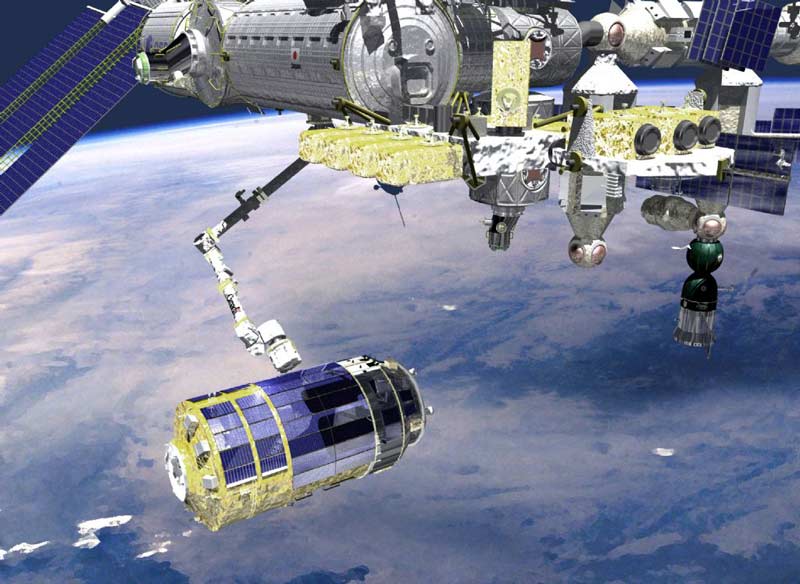Japanese Cargo Ship Faring Well on First Voyage

Japan's first unmanned cargo ship is on track to arrive Thursdayat the International Space Station (ISS) to deliver precious supplies andscience experiments.
The H-2Transfer Vehicle (HTV-1), which launchedSept. 10, is doing well and has been performing nominally so far, said MatsuoNaoko, spokesperson for the Japanese Aerospace Exploration Agency (JAXA).
"We conducted demonstration tests on last Saturday, Sept.12," Matsuo told SPACE.com. "It did very well, so the mission managementteam will review the data of demonstration tests and they will decide whether wewill 'go' or 'not go' to the space station."
The official go-ahead is expected in the next couple of days.
Once HTV-1 arrives at the ISS, it must be grabbed byastronauts controlling the station's robotic arm. The cylindrical freighter isdue to stay at the orbital outpost for about 40 to 45 days, and then be let goto burn up in the Earth's atmosphere during re-entry.
The new spacecraft is about 33 feet (10 meters) long and 14feet (4.4 meters) wide. This ship cost about $220 million, though JAXA has spenta total of about $680 million overall on its development since 1997.
Among the 3.5 tons carried by the cargo ship are scienceexperiments to go in the station's Japanese Kibo laboratory, which contains anoutdoor exposed facility as well as indoor pressurized compartments. The HTVcraft isunique in its ability to transport items meant for both inside and outsideenvironments.
Get the Space.com Newsletter
Breaking space news, the latest updates on rocket launches, skywatching events and more!
"We have two big exposed facility payloads," Matsuosaid. "One is a NASA payload and one is a JAXA payload. And in the pressurizedsection many crew items, food and clothes are packed."
The successof this ship is especially important given the expected retirement of thespace shuttle fleet in the next year or two. After that, the HTV will join Europe'sAutomated Transfer Vehicles and the Russian Progress spacecraft as the mainsources of cargo transport to the ISS.
- Video - Japan's Spaceship Dreams: Part 1, Part 2
- Video - Inside Japan's New H-2B Rocket
- Video - Maiden Flight of Japan's Space Freighter
Join our Space Forums to keep talking space on the latest missions, night sky and more! And if you have a news tip, correction or comment, let us know at: community@space.com.

Clara Moskowitz is a science and space writer who joined the Space.com team in 2008 and served as Assistant Managing Editor from 2011 to 2013. Clara has a bachelor's degree in astronomy and physics from Wesleyan University, and a graduate certificate in science writing from the University of California, Santa Cruz. She covers everything from astronomy to human spaceflight and once aced a NASTAR suborbital spaceflight training program for space missions. Clara is currently Associate Editor of Scientific American. To see her latest project is, follow Clara on Twitter.